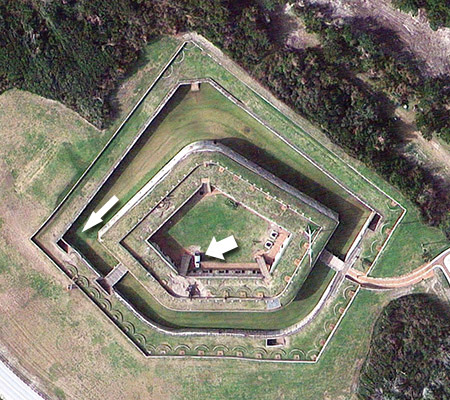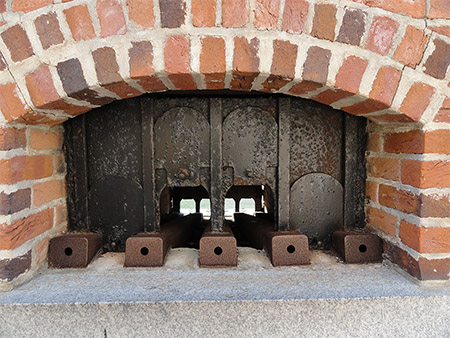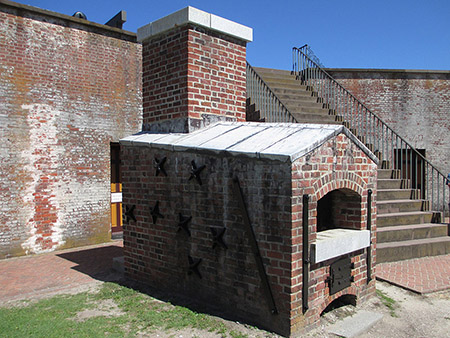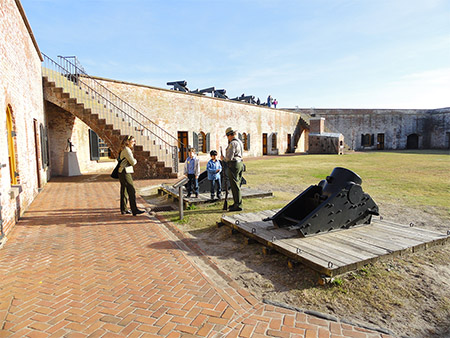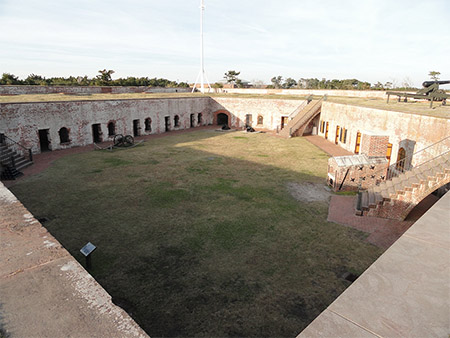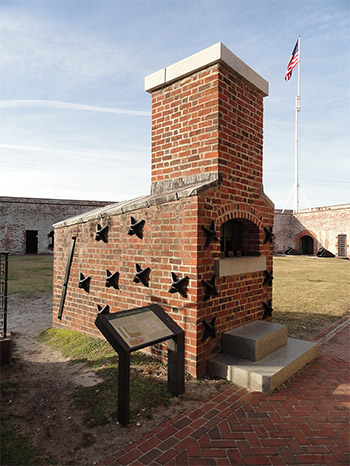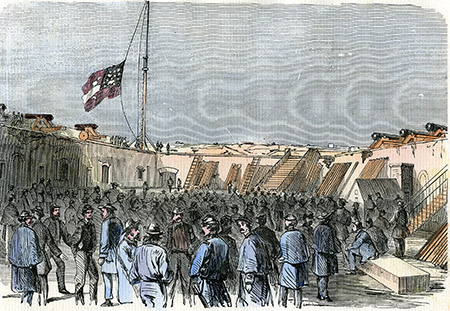The uniquely-shaped
Fort Macon was constructed from 1826 to 1834, and designed by the hero of the
Third System of American seacoast defense,
Simon Bernard (1779-1839). Lieutenant William A. Eliason, the superintending engineer constructing the fort, originally indicated that Fort Macon should be supplied with no fewer than
three such furnaces, but only two would ever be built.
The fort's first hot shot furnace was built in 1836, at the location where the reconstructed furnace stands today. In 1840, US Army Engineer Captain Robert E. Lee (1807-1870) visited Fort Macon, and suggested that a second hot shot furnace be built, to provide heated shot for the fort's outer guns, on what is called the
covertway.Information on the second hot shot furnace is less plentiful: It was only mentioned once, briefly, in an engineer report. It is known to have been built around 1843, and was probably located in Fort Macon's ditch, next to stairs leading to the upper level of guns (see pesky arrows on the image to the right for the shot furnaces' locations).
Both of Fort Macon's hot shot furnaces were demolished by 1867. The location of the furnace on the fort's parade ground was obvious to future generations by its remaining foundation, but no visible trace remained of the second furnace. Heroic probings of the ground at the ditch location by Fort Macon expert Paul Branch, possibly one of the coolest humans
ever, revealed brick rubble. That sure sounds like the right location to
me!













